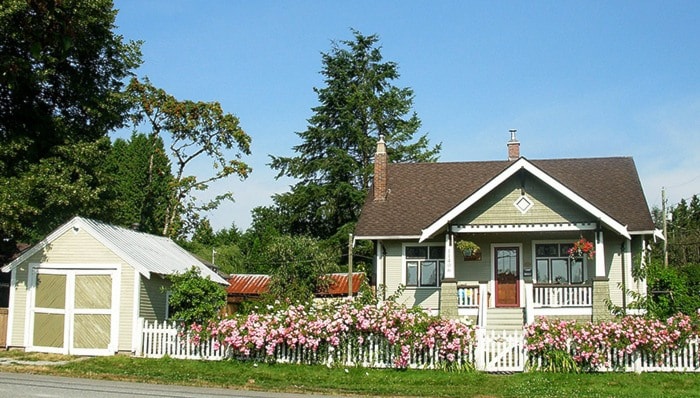As the municipal planning department begins consultants of Hammond about development in the area, everyone needs to keep in mind its history.
Doing so will ensure that the best features of Hammond are retained and honoured.
In 1883, when Port Hammond Junction was registered as a town, the layout of the streets on both sides of the CP rail tracks was the same as today.
The Hammond brothers, William and John, along with Emmeline Mohun, modelled the area on a typical English pattern, with short blocks, some served by alleys, and a block for a park.
Hammond has remained a livable community, even though the commercial area has dwindled.
Many older houses have been maintained or restored, including the Whitehead home on 205th Street.
When the builder of that home, Carl Walkeapaa, immigrated to Canada from Finland at the age of 18, the immigration officers thought his last name was too difficult to pronounce and gave him a new one – Olson, after his father, Ollie.
Carl, who arrived with several friends, then crossed Canada by train and found work helping building a pulp mill in Powell River.
He then worked in a mill in Chase, where he met and married a Finnish widow, Lempi, who had two daughters, Ethel and Ellen.
The new family moved to Hammond, where Carl gained work as a sawyer at Hammond mill.
Carl purchased a double lot on what was Waugh Street, now 205th, from a Swedish bachelor, and in 1923 built the home that still stands today – similar to other Finnish homes in Webster’s Corners.
He also built four other homes in Hammond, which also remain.
Some time after the death of his first wife, Carl married another Finnish woman, Anna Julia Kallio. She persuaded him to change his last name to Whitehead, the English translation of his original family name.
The couple raised two more children, Jim and Julie.
The family had one of the first TV sets in Hammond.
Carl Whitehead passed away in 1969.
The cedar mill has played a major role in the growth and vitality of Hammond, as well as complaints about flying ash and sawdust.
Years ago it installed filters on smokestacks to cope with the former.
As the mill has evolved over the years, though, the numbers of people it employs has diminished.
Besides the mill, the fishing industry was another key employer in Hammond. Every house along Dyke Road seemed to have a boat beside it or in the Fraser River.
Residents could easily scoop up a bucket of oolichan during such runs.
Another lasting feature of Hammond is baseball, with the original playing field on Lorne Avenue. It was so small at one time that home run balls actually broke a few windows.
Competition between Hammond and Haney teams always drew a crowd.
The current field off Westfield Avenue remains an integral part of Hammond’s history, and is undergoing a half-million-dollar retrofit.
– Sheila Nickols is past president of the Maple Ridge Historical Society.
